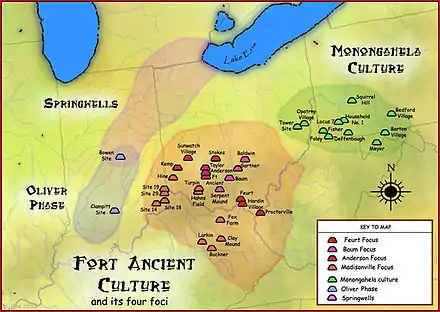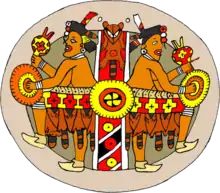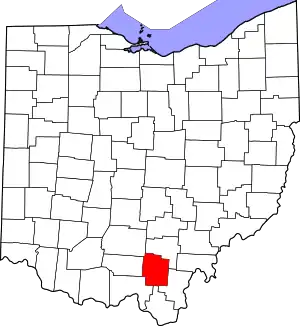Leo Petroglyph
The Leo Petroglyph is a sandstone petroglyph containing 37 images of humans and other animals as well as footprints of each. The petroglyph is located near the small village of Leo, Ohio (in Jackson County, Ohio) and is thought to have been created by the Fort Ancient peoples (possibly AD 1000–1650). The area in which the sandstone petroglyph was found is on the edge of an unglaciated Mississippian sandstone cliff 20–65 feet high. To this day, the meanings of the drawings are unknown. On November 10, 1970, it was added to the National Register of Historic Places. The site is maintained by the Ohio History Connection.
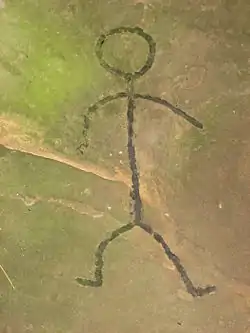
A human figure petroglyph
Leo Petroglyph | |
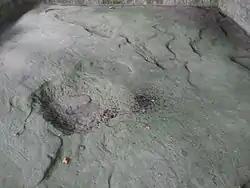 Comprehensive view of the petroglyph site | |
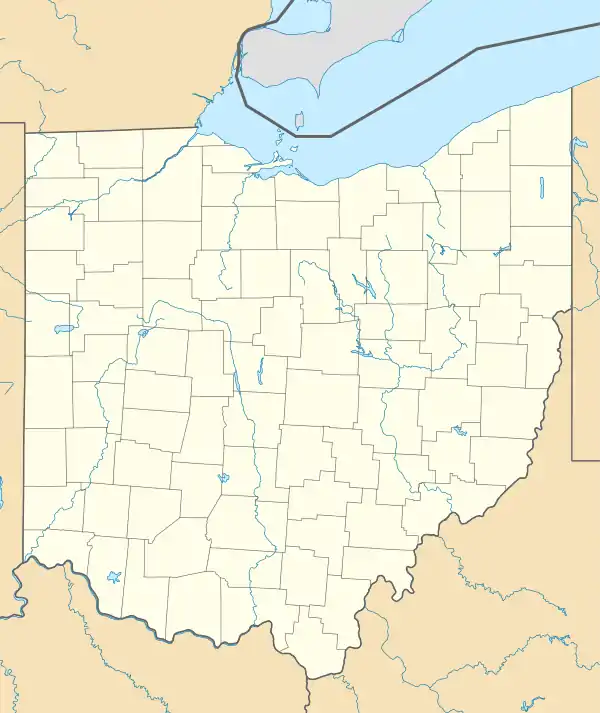  | |
| Nearest city | Coalton, Ohio |
|---|---|
| Coordinates | 39°9′2.91″N 82°40′29.29″W |
| Area | 12.3 acres (5.0 ha) |
| NRHP reference No. | 70000501[1] |
| Added to NRHP | November 10, 1970 |
References
External links
| Wikimedia Commons has media related to Leo Petroglyph. |
- "Leo Petroglyphs & Nature Preserve". Ohio Historical Society.
- Labadie, John (Winter 1992). "The Rock Art of Ohio: A Look into the Past and an Agenda for the Future". Ohio Archaeologist. 42 (1): 10–5. hdl:1811/55903.
- Koch, Arthur Richard (1976). Floristics and ecology of algae on sandstone cliffs in east- central and southeastern Ohio (PhD Thesis). Ohio State University. OCLC 973336298. ProQuest 302813854.
This article is issued from Wikipedia. The text is licensed under Creative Commons - Attribution - Sharealike. Additional terms may apply for the media files.
